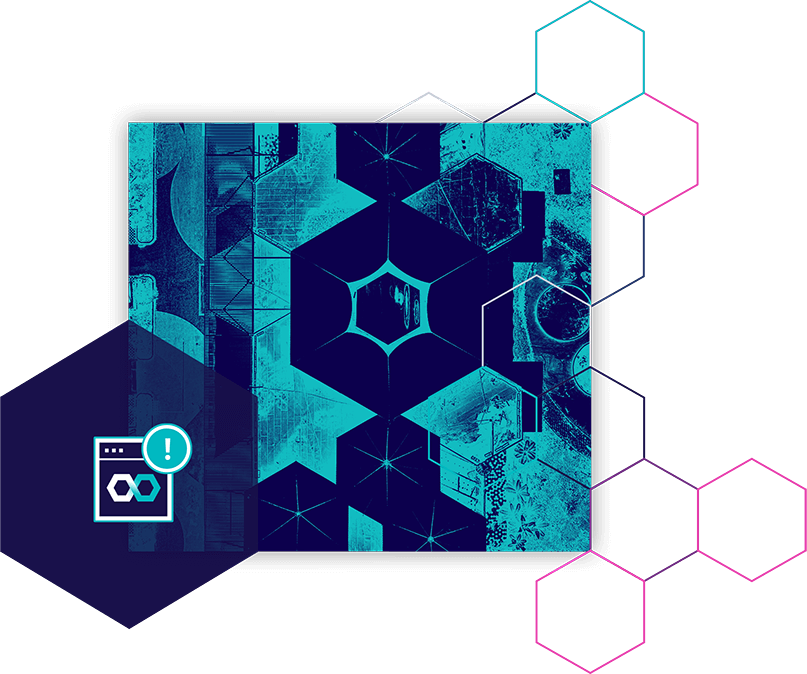TRUEFORT SOLUTION
Mitigate Software Supply Chain Attacks
Using third-party code (the software supply chain) in enterprise applications has made products vulnerable to attack. Cybersecurity incidents can occur, forcing security teams to re-evaluate their applications, including the supply chain software within their code. TrueFort limits these incidents by continuously discovering and understanding the application interactions and workload behaviors to detect changes quickly.
Malicious Third-Party Code is Larger Than You Think
- Zero-day attacks are continually morphing – Relying on existing tools like code signing certificates and known bad detection methods, indicators of attack (IOA), and indicators of compromise (IOC), are not stopping supply chain attacks.
- Network-centric tools are easily thwarted – attackers understand how to avoid detection from these tools easily by not crossing a perimeter.
- Service accounts are easy-to-access points – Unchecked and rogue service accounts provide a seamless path for lateral movement.
- Software updates may contain supply chain vulnerabilities – Understanding application and automated account behavior quickly enables the detection of anomalous activity as it emerges from supply chain code.

Automate Understanding Application Behaviors to Block Exposure
Achieve intra-application visibility
Achieve intra-application visibility: Identify and map applications, their dependencies, and communications within to immediately spot anomalous behavior indicating exploited supply chain software
Establish normal and acceptable
Understand workload activity and enforce acceptable behavior to defend against software supply chain vulnerabilities that enable the spread of larger attacks
Analyze changing behaviors
Real-time detection for workloads against an application behavior baseline provides the best approach for detecting threats that bypass traditional snapshot cloud security methods
Limit blast radius
Prevent an intrusion from becoming a breach by enforcing microsegmentation policies based on known behavior
FAQ
A supply chain attack, in the context of cybersecurity, refers to a malicious act where cybercriminals target and exploit vulnerabilities within a trusted third-party vendor or supplier to compromise a target organization’s systems or data. It involves infiltrating the supply chain network to gain unauthorized access, insert malicious code, or tamper with software or hardware components. By exploiting the trust relationship between organizations and their suppliers, attackers can distribute malware, steal sensitive information, or disrupt critical operations. Supply chain attacks pose a significant risk as they can propagate widely, affecting multiple interconnected organizations, highlighting the importance of robust supply chain security practices and thorough vendor risk assessments.
Preventing supply chain attacks requires organizations to adopt proactive security measures and implement robust practices. Here are key strategies to consider:
- Vendor Risk Management: Conduct thorough assessments of vendors’ security practices, including their software development lifecycle, security controls, and incident response capabilities.
- Supply Chain Visibility: Maintain visibility and control over the entire supply chain, ensuring transparency regarding software and hardware components, and verifying their integrity.
- Secure Development Practices: Encourage vendors to follow secure coding practices, perform regular security testing, and address vulnerabilities promptly.
- Continuous Monitoring: Implement robust monitoring systems to detect suspicious activities, anomalous behaviors, or unauthorized access within the supply chain network.
- Patch Management: Regularly update and patch software and firmware across the supply chain to mitigate known vulnerabilities.
- Employee Education: Train employees on supply chain security risks, phishing awareness, and secure communication practices to reduce the risk of social engineering attacks.
- Incident Response Planning: Develop and test incident response plans specific to supply chain attacks, ensuring a coordinated and swift response in the event of a breach.
By implementing these preventive measures and fostering a culture of security and diligence, organizations can bolster their supply chain security, mitigate the risk of attacks, and safeguard their critical assets and operations.










